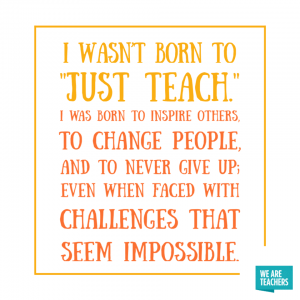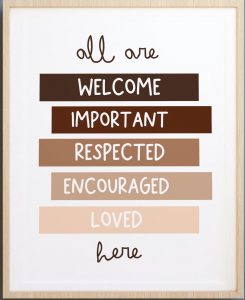SECTION 1: The zone I picked for my Linguistic Landscape assignment was the entire town of Raymore sask, which is where I live. I decided to pick the entire town due to it not being that big and I was interested to learn the history and explore more of it. I did not grow up in Raymore but I moved to Raymore from Melville Sask five years ago. Melville is considered a city but to me it will still be just a little bit bigger of a ‘town’ than Raymore is. The town of Raymore became a town in 1908 and the current population is a total of 575 people. In Raymore there is a variety of different ages. The majority of them are older, anywhere from 60-64 but there are slowly starting to become more younger people moving into the area as well. There are a lot of nurses and EMT’s in the town as well as teachers. The community of Raymore is an agricultural town which results in us having four big agricultural dealerships, Case IH, John Deere and Mazergroup, previously known as Raymore New Holland. Our community is made up of 75% of aboriginal population and the second largest aboriginal population is the Metis. Our town is also close to many aboriginal reservations so we have a diverse community of people. Although there are many different cultures around Raymore, I have come to realize that most of the community is made up of the English language.
While researching the history of Raymore, I kept finding myself coming across many articles about the bar that still stands today. This bar was built in 1911 by Archibald G. MacLean but by 1916 there were new owners, William “Bill” Baker and his wife Ida. These owners ran the hotel with the help of two Chinese cooks, a waitress and a porter. They held dances and fancy-dress parades but when the prohibition hit, the Bakers left and they sold the hotel to two Chinese, Mah Yuen and Ping Sam. In 1935 which was the year the government allowed the sale of beer. The two Chinese could not obtain a liquor license due to the law stating you could only obtain a liquor license if you could vote which Chinese could not until 1947. Through many articles this was the only mention of a different culture or language coming into Raymore. Another big part of Raymore is the Pioneer Museum which is a historical two one-storey, wood-frame churches that we moved into Raymore starting in1967 to commemorate Canada’s Centennial. The museum’s collection expanded which resulted in moving an old church from the town of Quinton just down the road to provide more space for displaying artifacts.
Raymore is off the highway of 6 and 15. It does not look like it in the picture but it is also on an angle
http://hotelhistories.blogspot.com/2015/03/the-raymore-hotel.html
https://www.historicplaces.ca/en/rep-reg/place-lieu.aspx?id=7426
SECTION 2:
Poster that was both English and French found in the post office window
The Loras disposal bins also do not show any proof of multilingual either
Electronic Bulletin board on mainstream shows announcements etc but only in English. This is a big sign everyone sees that could easily display more than just English on it for language
This is the grocery store that the one Chinese family owns
Public library sign. They have story time here for play school children. This is one spot that should be multilingual not just for the community but for the children to learn also
School Bus sign out front the Raymore School
| English | French | Bilingual | First Nation Language |
| 20 | 2 | 2 | 0 |
Shows how many of what language were present in pictures
| Store-front | Bulletin board | Street Signs | Building Signs | Poster Signs |
| 4 | 4 | 7 | 0 |
Shows what languages were where
SECTION 3: Throughout this process I believe that due to the majority of my pictures being of English language, Raymore proves to be more of a one language town, or monolingual. There are not many diverse languages being spoken in Raymore which results in less posters, signs etc. being in more than one language. Although there are many different cultures in Raymore and surrounding area, through all the pictures I took or signs I came across while on my walk or driving around; I would expect that English would be the most spoken language. Other than the two poster’s I saw in the post office with both English and French printed on them, I have never personally heard someone speak French in Raymore, but that does not mean that people don’t speak it. The most common language I would expect to hear in Raymore is English with the occasional time being Chinese due to having Chinese owners in our bar, a grocery store, a restaurant as well as the Esso/restaurant. There is a possibility of Indigenous languages spoken as well due to Indigenous people being in and around the town. As I drove or walked around town, I realized just how many English signs there were and how little of any other language was present, although there are other families who speak different languages in town. I believe that the languages in the pictures I have taken do represent my own linguistics identity due to the fact that I only speak English and 99% of the signs were in English only. With so many signs being in English form, it seems to be that it could be considered the main spoken language in other small towns other than Raymore. I believe this could be due to the fact that lots of small towns seem to have the same family history, and therefore like to raise their families where they were raised, which results in only one main spoken language.
This linguistic landscape shapes me with being confident in my own language but also being aware that there also needs to be more signs with different languages represented for new comers, tourists or just to acknowledge the people that speak more than one language in and around our town. While going around town I came to realize that there must be many children in town due to so many signs about children playing or school zones. This shows that the community is growing with different cultural families and will continue to thrive as the children get older, which means that the signs also need to become more diverse as the community continues to grow. The power to determine what languages appears in signs I believe is the people of the community. This would possibly include; the mayor, town committee or counsel, the residents and anyone else who has a right to an opinion. When you live in a village, town, or city, I feel you should have some type of right in voicing your opinion about anything that goes on, this includes the type of signs that go up for everyone to better understand the people that live in the community. This might be easier to achieve in a smaller town due to everyone knowing each other and being able to get your opinion across. I also think that the people or families that have immigrated to Canada or people that have chosen to learn a new language just to understand it more, should not suffer with having to know English to read the signs. When people go on vacation, if there is not a translation for your language somewhere on a sign, it is extremely hard to understand where you are going and how to get there. This is the same concept for people in Canada. Each village, town, city should be more accommodating to the multilingualism in their communities and post more than just English on signs.
To me a small community like Raymore is looked at like a big family and family fight for what is right and what is right is to have more signs to acknowledge the different cultures and families in the community. I feel this is important because they also help contribute in the day-to-day tasks that make up the community everyone lives in. If signs are needed to be put around the community, Mayor and Council are the ones who will decide on this, as well as the language put onto said signs. The acknowledgment of changing the signage is a simple step to show that the community welcomes diversity and does not shy away. It also shows we are accepting of all backgrounds and welcoming new understandings of who truly lives in our communities. These changes do not just simply have to mean signage on a building or store front, but can also be shown by our Chinese store owners bringing in and embracing their culture in the actual store itself. This can be done by posters, pictures, music etc. This also allows other people to be able to embrace different culture and gives hope that people may want to learn their language as they learn ours. While doing this assignment, it truly opened up my eyes to the signs around my community. I find it shows just how monolingual we seem to be even though there are many multilingual families as well as different families of culture in and around our community. This made me think about how little we truly acknowledge the different cultures and people around and, in our community, even though we are mostly an English-speaking community. Acknowledging that there are more people that could come into a community with different cultures and languages is a small step in welcoming anyone into a new village, town or city. I believe with the right direction and determination, our community of Raymore as well as many other places, can begin making small changes that will be able to include all cultures in and around the community. This will help to make everyone feel more accepted and like they are understood and belong.



Leave a Reply